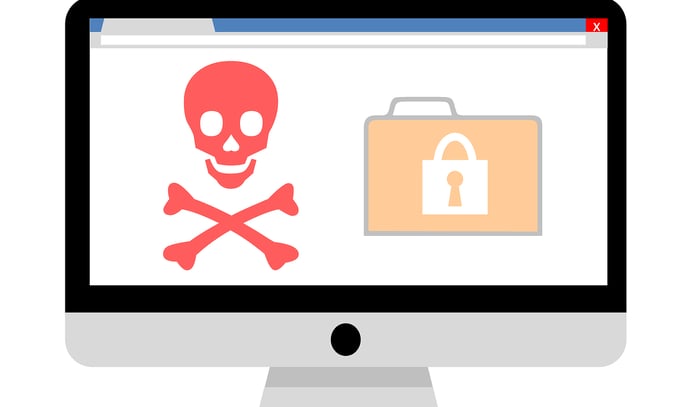The Evolution of Ransomware and How to Protect Against It
Ransomware has evolved from a relatively simple nuisance into one of the most formidable threats in the cybersecurity landscape. This malicious software, which encrypts a victim's data and demands payment for its release, has seen significant advancements in both its complexity and impact. In this blog, we'll explore the evolution of ransomware, notable attacks over the years, and effective strategies for protecting against this persistent threat.
CYBER ATTACK
6/11/20243 min read


The Early Days of Ransomware
The first known ransomware attack, known as the "AIDS Trojan" or "PC Cyborg," appeared in 1989. Distributed via floppy disks, it encrypted filenames on the victim's computer and demanded a ransom of $189 to be sent to a P.O. box in Panama. While rudimentary by today's standards, this attack laid the groundwork for future ransomware tactics.
The Rise of Cryptographic Ransomware
The mid-2000s saw the emergence of more sophisticated ransomware using strong cryptographic techniques. This period marked the transition from simple locker ransomware, which restricted access to the computer, to cryptographic ransomware that encrypted files and rendered them inaccessible without a decryption key.
Notable Attacks:
CryptoLocker (2013): One of the most infamous ransomware attacks, CryptoLocker spread through email attachments and encrypted files on Windows computers. The attackers demanded payment in Bitcoin, marking a trend towards cryptocurrency for ransom payments.
TeslaCrypt (2015): Initially targeting gamers by encrypting game-related files, TeslaCrypt evolved to encrypt a wide range of file types. The developers eventually released the master decryption key, allowing victims to recover their data without paying the ransom.
The Ransomware-as-a-Service (RaaS) Model
In recent years, the ransomware landscape has been transformed by the emergence of Ransomware-as-a-Service (RaaS). This model allows cybercriminals with limited technical skills to launch ransomware attacks by purchasing or subscribing to ransomware kits developed by more skilled hackers.
Notable Attacks:
Cerber (2016): A prominent example of RaaS, Cerber allowed affiliates to distribute the ransomware in exchange for a percentage of the ransom payments. Cerber's developers provided regular updates and support, making it an attractive option for aspiring cybercriminals.
GandCrab (2018): Another successful RaaS operation, GandCrab was responsible for numerous attacks worldwide. The developers claimed to have earned over $2 billion in ransom payments before announcing their retirement and releasing the decryption keys.
The Era of Big Game Hunting
More recently, ransomware attacks have shifted towards targeting large organizations and critical infrastructure in what is known as "big game hunting." These attacks demand higher ransoms, often in the millions of dollars, and can cause significant disruption to business operations and public services.
Notable Attacks:
WannaCry (2017): Leveraging a vulnerability in Windows, the WannaCry ransomware spread rapidly, affecting over 200,000 computers in 150 countries. The attack disrupted operations at major organizations, including the UK's National Health Service (NHS).
Ryuk (2018): Ryuk has been used in targeted attacks against large enterprises, often preceded by other malware infections like TrickBot or Emotet. Ryuk's operators demand high ransoms, and the ransomware is known for its sophisticated techniques to evade detection and maximize damage.
Protecting Against Ransomware
As ransomware continues to evolve, so too must our defenses. Here are some effective strategies to protect against ransomware attacks:
Regular Backups
Frequent and Isolated Backups: Regularly back up important data and ensure backups are stored offline or in a separate network segment to prevent ransomware from encrypting the backup files.
Test Restore Procedures: Periodically test your ability to restore data from backups to ensure the process works as expected.
Robust Security Practices
Multi-Factor Authentication (MFA): Implement MFA to add an extra layer of security for user accounts, making it harder for attackers to gain unauthorized access.
Endpoint Protection: Use advanced endpoint protection solutions that include behavior-based detection and response capabilities to identify and mitigate ransomware threats.
Employee Training and Awareness
Phishing Awareness: Educate employees about the dangers of phishing emails and how to recognize suspicious attachments and links.
Security Policies: Enforce strong security policies, including regular password updates and the use of complex passwords.
Patch Management
Timely Updates: Ensure all software, including operating systems and applications, is kept up-to-date with the latest security patches to close vulnerabilities that ransomware might exploit.
Network Segmentation
Limit Lateral Movement: Segment your network to limit the spread of ransomware. Use firewalls and access controls to restrict communication between different network segments.
Incident Response Plan
Preparedness: Develop and regularly update an incident response plan that includes specific procedures for dealing with ransomware attacks. Ensure all employees know their roles in the event of an attack.
Collaboration with Authorities: Establish relationships with local law enforcement and cybersecurity authorities to facilitate collaboration and support in the event of an attack.
Conclusion
Ransomware has come a long way since its inception, evolving into a sophisticated and highly profitable criminal enterprise. Understanding its evolution and staying informed about the latest trends and tactics is crucial for protecting against this persistent threat. By implementing robust security measures, educating employees, and preparing for potential incidents, organizations can significantly reduce their risk of falling victim to ransomware and ensure a quicker recovery if an attack does occur. As the threat landscape continues to evolve, vigilance and proactive defense strategies will remain key to staying ahead of ransomware attacks.
Cyber Guard Forte
